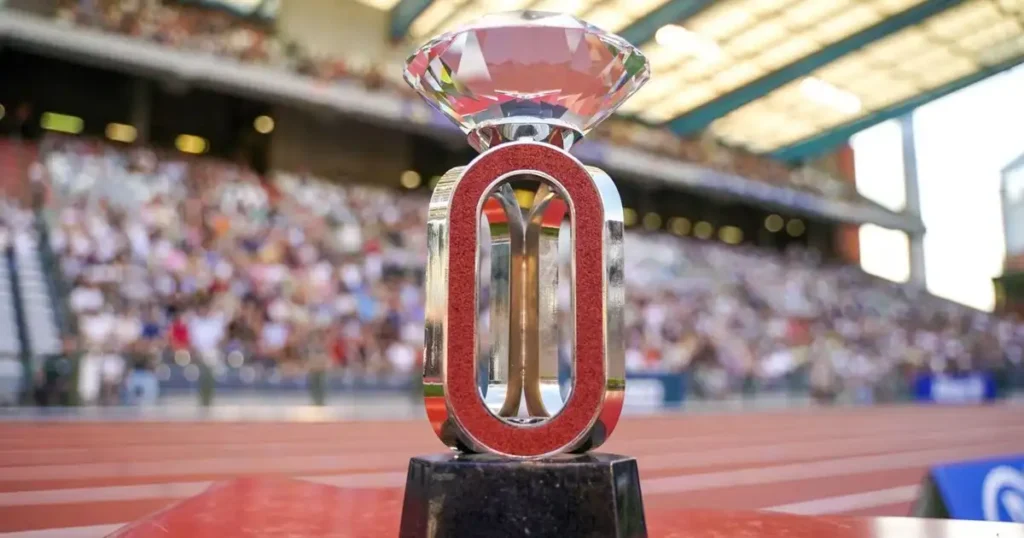What Is the Diamond League in Athletics? Format, Rules, and Complete List of Events

The Diamond League is one of the most elite competitions in track and field, showcasing the world’s top athletes across a range of disciplines. Designed to maintain excitement throughout the athletics season, it brings Olympic and World Championship-level performances to stadiums around the globe. But how exactly does the Diamond League work, and what makes it so significant in the athletics calendar? Let’s break down its structure, unique rules, and the events it includes.
Origins and Purpose of the Diamond League
The Diamond League was launched in 2010 by World Athletics, formerly known as the IAAF, as a replacement for the Golden League. The goal was to create a global series that would consistently feature top athletes and offer more competition opportunities beyond major tournaments like the Olympics or World Championships.
Rather than focusing on just a few cities, the Diamond League expanded to include meetings across multiple continents. This helped grow the sport’s fan base, while also giving athletes regular access to high-level events throughout the season.
How the League Works: Points and Finals
Each year, the Diamond League consists of a series of meetings held in various cities between May and September. Athletes participate in their respective events across these meetings, collecting points based on where they finish in each competition.
- First place earns the most points, followed by fewer points for second, third, and so on.
- The athletes with the highest points in each event at the end of the regular season qualify for the Diamond League Final, which serves as the season-ending championship.
The final is held in one of the prestigious venues like Zurich or Brussels, and the winners in each discipline are awarded the Diamond Trophy, along with a substantial cash prize and international recognition.
Unique Format: The “Final 3” Rule in Throws and Jumps
In recent seasons, World Athletics introduced a new twist for throw and horizontal jump events called the “Final 3” format. This rule applies to events such as long jump, triple jump, shot put, discus, and javelin.
Here’s how it works:
- All participants get five attempts as usual.
- After the fifth round, only the top three performers move on to a final sixth attempt.
- The winner is determined solely based on the results of this last attempt, even if an earlier throw or jump was better.
This rule was implemented to keep viewers engaged right up to the final round, as the ultimate result hinges on that last performance. However, it has stirred debate, with some athletes and fans questioning its fairness.
Full List of Events in the Diamond League
The Diamond League covers a broad range of track and field events. Not all events are held at every meeting, but all core disciplines are included over the course of the season. Here’s a look at the key events:
Track Events
- Sprints
- 100m (Men & Women)
- 200m (Men & Women)
- 400m (Men & Women)
- Middle-Distance
- 800m (Men & Women)
- 1500m (Men & Women)
- Mile (featured occasionally)
- Long-Distance
- 3000m (Men & Women)
- 5000m (Men & Women)
- Hurdles
- 100m hurdles (Women)
- 110m hurdles (Men)
- 400m hurdles (Men & Women)
- Steeplechase
- 3000m steeplechase (Men & Women)
Field Events
- Jumps
- High Jump (Men & Women)
- Pole Vault (Men & Women)
- Long Jump (Men & Women)
- Triple Jump (Men & Women)
- Throws
- Shot Put (Men & Women)
- Discus Throw (Men & Women)
- Javelin Throw (Men & Women)
- Hammer Throw (included occasionally, not a core Diamond discipline)
Each of these events contributes to the athletes’ point tally across the season, helping determine who advances to the finals.
What Athletes Compete For
Beyond prestige and recognition, Diamond League athletes are competing for substantial rewards:
- Diamond Trophy: Awarded to the season champion in each discipline.
- Prize Money: Winners of each meeting and the finals receive cash prizes.
- Global Ranking Points: Performances contribute to athletes’ standings in the official World Athletics rankings, which play a role in major competition entries.
For many athletes, success in the Diamond League also leads to endorsement opportunities and increased media exposure.
Why It Matters in the World of Athletics
The Diamond League isn’t just another series of competitions—it’s a critical part of the global athletics ecosystem. It helps maintain public interest in the sport outside Olympic or World Championship years and allows fans to follow ongoing rivalries and see emerging stars.
For competitors, it offers a consistent, high-quality platform to test themselves against the best in the world throughout the year. Winning a Diamond League title is often seen as the next-best accomplishment after an Olympic or world title.
Final Thoughts
The Diamond League has redefined how athletics is showcased, making it more viewer-friendly, competitive, and consistent throughout the year. With its rotating global venues, evolving formats like the Final 3, and participation from the world’s top talent, it’s become a centerpiece of modern track and field.
Whether you’re a longtime fan or just discovering the sport, the Diamond League offers excitement, unpredictability, and world-class performances across every event.






